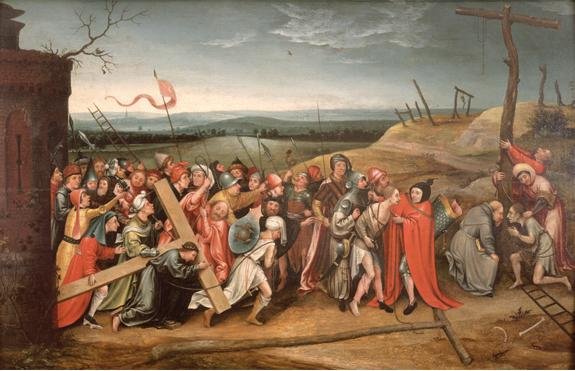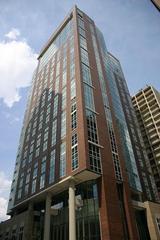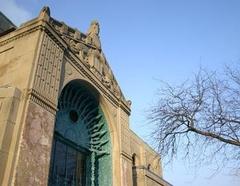
Loyola University Chicago Visiting Hours, Tickets, and Historical Sites Guide
Date: 14/06/2025
Introduction
Loyola University Chicago is a distinguished Jesuit institution located along the scenic shoreline of Lake Michigan in the Rogers Park neighborhood. Since its founding in 1870, Loyola has developed into a university celebrated for its striking architecture, academic excellence, and commitment to social justice. Visitors can experience a dynamic campus with historical landmarks, serene green spaces, and a vibrant community. This comprehensive guide covers everything you need to know about visiting Loyola University Chicago—from hours and ticketing to accessibility, campus tours, and nearby attractions.
For the latest schedules, special event information, and campus updates, consult official resources (Wikipedia), (LUC Empowering Leaders), and (Urban Matter).
Table of Contents
- Founding and Historical Development
- Campus Expansion and Academic Excellence
- Jesuit Mission and Educational Philosophy
- Visiting Loyola: Hours, Tickets, and Accessibility
- Key Campus Landmarks and Facilities
- Student Life, Diversity, and Athletics
- Tips for an Optimal Visit
- Rogers Park Neighborhood and Local Attractions
- Frequently Asked Questions (FAQ)
- Summary and Visitor Recommendations
- References
Founding and Historical Development
Loyola University Chicago began in 1870 as St. Ignatius College, established by Jesuit priest Arnold Damen to serve Chicago’s rapidly growing population (Wikipedia). Originally located downtown, the college was renamed in 1909 and began relocating to its current Lake Shore Campus in 1912. This move anchored the university in a diverse and developing part of Chicago, solidifying its role as a key educational and community institution.
Campus Expansion and Academic Excellence
Loyola’s expansion paralleled Chicago’s own remarkable growth. Key milestones include:
- Professional Schools: Law (1908), Medicine (1909), Business (1922), Nursing (1935), Dental Surgery (1923).
- Multiple Campuses: The Water Tower Campus downtown (1949), the Rome campus (1962), and the Health Sciences Campus in Maywood (1969).
- Mundelein College Integration: In 1991, Loyola acquired Mundelein College, further broadening its academic and cultural reach.
Loyola now comprises thirteen colleges and schools, offering over 80 undergraduate and 140 graduate/professional programs to approximately 17,000 students (Wikipedia).
Jesuit Mission and Educational Philosophy
Loyola’s Jesuit identity is rooted in “cura personalis”—care for the whole person. The university emphasizes reflection, service, diversity, and lifelong learning (LUC Empowering Leaders). Arrupe College, launched in 2015, exemplifies Loyola’s commitment to educational access for all backgrounds (Wikipedia).
Visiting Loyola: Hours, Tickets, and Accessibility
General Visiting Hours
- Lake Shore Campus: Open to the public daily, 7 AM–10 PM (most public areas).
- Madonna della Strada Chapel: Monday–Friday, 8 AM–6 PM; closed on major holidays. Open for prayer, reflection, and tours.
- Information Commons and Damen Student Center: 7 AM–10 PM, Monday–Friday; check for special holiday hours.
Tickets and Admission
- General Admission: No fee for walking tours or most campus areas.
- Events and Tours: Some special events and guided tours may require advance registration or a nominal fee. Check the university website for details.
Guided Tours and Special Events
- Campus Tours: Offered Monday–Saturday, both in-person and virtually. Reservations recommended, especially during busy periods.
- Special Events: Public lectures, exhibitions, and performances are often open to visitors. Confirm schedules via the university’s events calendar.
Accessibility
- Campus Access: Most buildings are ADA-compliant, with ramps, elevators, and accessible restrooms.
- Accommodations: Contact the Office of Accessibility for specific needs or assistance.
Key Campus Landmarks and Facilities
Madonna della Strada Chapel
A stunning Art Deco chapel, completed in 1939, and a spiritual and architectural highlight. Features include stained glass windows, a serene lakeside setting, and a renowned pipe organ. (Urban Matter)
- Hours: Monday–Friday, 9 AM–5 PM. Check for service and event times.
Cudahy Library & Klarchek Information Commons
The historic Cudahy Library (opened 1930) and the adjacent modern Information Commons (with panoramic lake views and sustainable design) form the academic heart of campus.
- Hours: 8 AM–10 PM daily, public access available.
Lake Michigan Waterfront & Loyola Beach
Loyola’s campus provides direct access to beaches and walking paths. The area is perfect for relaxation, athletics, and enjoying Chicago’s natural beauty.
Mundelein Center for the Fine and Performing Arts
Formerly Mundelein College’s skyscraper, now home to arts programs, galleries, and a historic auditorium.
- Tickets: Required for theater and concert events.
Loyola University Museum of Art (LUMA)
Located downtown, LUMA features Renaissance, Baroque, and contemporary art, including the Martin D’Arcy Collection.
- Hours: Tuesday–Saturday, 11 AM–5 PM; Sunday, 12–5 PM; closed Mondays.
- Admission: Free. Guided tours and educational programs available.
Campus Green Spaces & Sustainability
Loyola’s Institute of Environmental Sustainability (IES) includes green roofs, aquaponics, and solar panels. The campus features peaceful gardens and hands-on sustainability initiatives.
- Tours: By appointment.
Student Life, Diversity, and Athletics
Loyola’s diverse student body hails from all 50 states and over 80 countries, with over 43% identifying as minority or international (Educational Wave). The university supports robust student organizations and offers an inclusive campus atmosphere. Athletic highlights include the men’s basketball team’s historic 1963 NCAA championship and recent volleyball national titles (Wikipedia).
Tips for an Optimal Visit
- Transportation: The CTA Red Line’s Loyola station is adjacent to the campus, and several bus routes serve the area.
- Parking: Visitor parking is available at the Neil Hartigan Parkway structure; spaces may be limited during events.
- Dining: On-campus cafés and a wealth of diverse restaurants in Rogers Park offer a variety of cuisines.
- Best Season: June is ideal for warm weather and active campus life, but the campus is beautiful year-round.
- Safety: Rogers Park is generally safe, and campus security is present 24/7.
Rogers Park Neighborhood and Local Attractions
Accessibility and Transportation
Rogers Park is a lively, multicultural neighborhood with easy access by CTA Red Line, multiple bus routes, and Metra’s Union Pacific North line (choosechicago.com, cityguidetochicago.com).
Neighborhood Highlights
- Loyola Park and Beach: 40 acres of sandy beach, fields, and arts programming.
- Mile of Murals: Glenwood Avenue’s extensive public art, best explored via self-guided walking tours.
- Historic Architecture: Notable buildings include Dumbach Hall (1908), Michael Cudahy Science Hall (1918), and the Frank Lloyd Wright–designed Emil Bach House (artnet.com).
- Dining & Nightlife: International cuisine, Glenwood Sunday Market, and music venues like Le Piano.
- Unique Experiences: Athena Board Game Cafe, Gerber/Hart Library for LGBTQ+ history.
Frequently Asked Questions (FAQ)
Q: What are Loyola University Chicago’s visiting hours?
A: Most public areas are open daily, typically 7 AM–10 PM. Specific building hours may vary; check the official website for details.
Q: Is there an admission fee to visit the campus?
A: No admission fee for general visits; certain events and exhibitions may require tickets.
Q: Are guided tours available?
A: Yes, offered Monday–Saturday. Advance booking is recommended.
Q: Is the campus accessible for visitors with disabilities?
A: Yes. The campus is ADA-compliant, and accommodations are available through the Office of Accessibility.
Q: How do I get to Loyola University Chicago?
A: The CTA Red Line’s Loyola stop is adjacent, with several bus and Metra options available. Parking is also provided.
Summary of Key Points and Visitor Recommendations
Loyola University Chicago is more than a prestigious university—it is a welcoming destination steeped in history, culture, and community engagement. Notable highlights for visitors include:
- Exploring the Madonna della Strada Chapel and Information Commons.
- Enjoying the lakefront campus and green spaces.
- Discovering the diverse arts, cuisine, and cultural experiences of Rogers Park.
- Taking advantage of ADA-compliant facilities and accessible transportation.
- Booking tours in advance and checking event calendars for the richest experience.
Loyola’s location along Lake Michigan, combined with its proximity to downtown Chicago and historic sites, ensures a rewarding and memorable visit. For personalized experiences, download the Audiala app and stay updated via Loyola’s social media channels (Loyola University Chicago President’s Report), (Educational Wave), (choosechicago.com).
References
- Loyola University Chicago, 2024, Wikipedia
- Empowering Leaders at Loyola University Chicago, 2024
- Urban Matter Chicago: Things to Do Around Loyola University, 2024
- Loyola University Chicago President’s Report, 2024
- Educational Wave: Pros and Cons of Loyola University Chicago, 2024
- Choose Chicago: 24 Hours in Chicago’s Rogers Park Neighborhood, 2024
- City Guide to Chicago: Things to Do in Rogers Park, 2024
- Artnet News: Frank Lloyd Wright Emil Bach House Donated to Loyola University Chicago, 2024






























































































































































